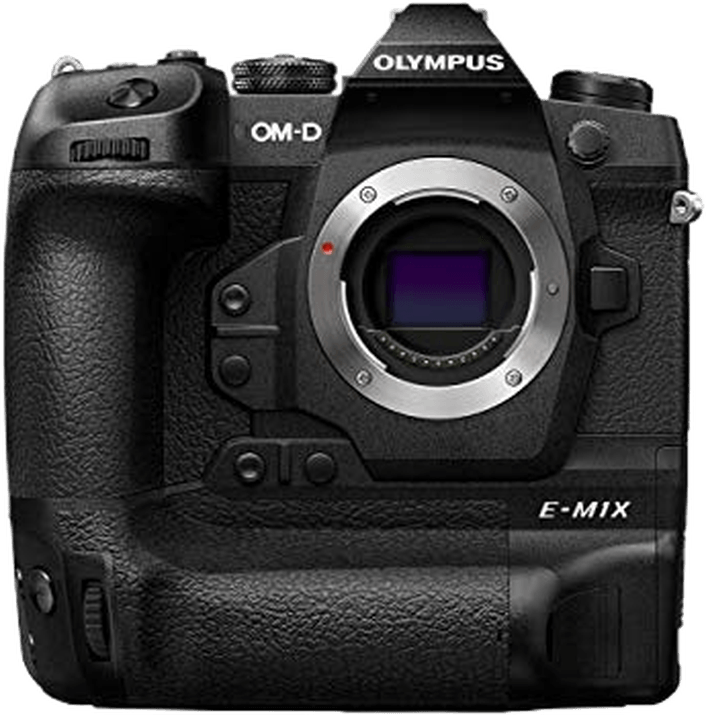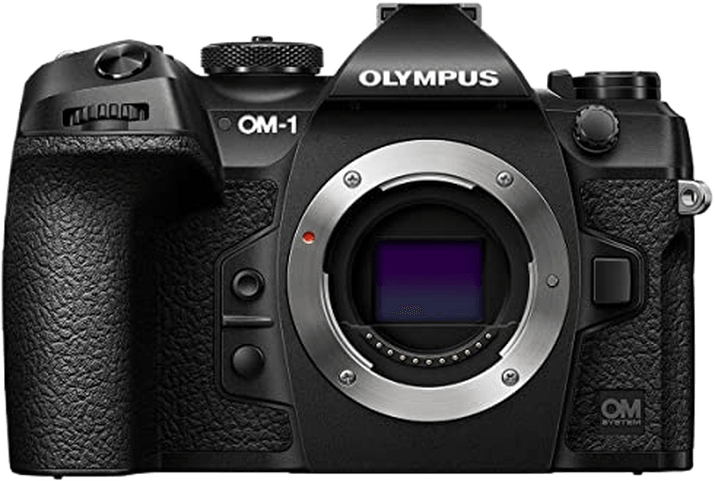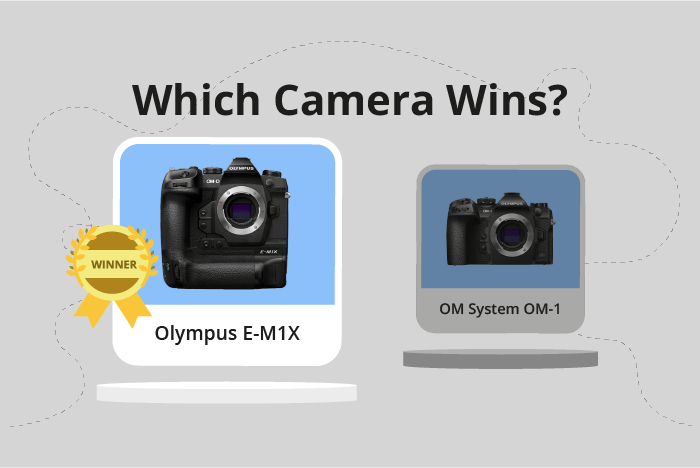Olympus OM-D E-M1X vs OM System OM-1 Comparison
Olympus OM-D E-M1X

Olympus OM System OM-1

The Olympus OM-D E-M1X takes the lead with a score of 75/100, a slight edge over the Olympus OM System OM-1, which scored 73/100. Both cameras are mirrorless and were launched within three years of each other, with the E-M1X being introduced in 2019 and the OM-1 in 2022.
The E-M1X is superior in terms of size and weight, measuring 144 x 147 x 75mm and weighing 997g (2.20lbs). This larger build allows for better handling and stability. On the other hand, the OM-1 is smaller and lighter, measuring 135 x 92 x 73mm and weighing 599g (1.32lbs), making it more portable and easier to carry for extended periods.
Although the E-M1X has a higher score, the OM-1 is more affordable with a launch price of $2199 compared to the E-M1X’s $2999 price tag. This makes the OM-1 a better option for budget-conscious photographers.
Taking all factors into consideration, the Olympus OM-D E-M1X offers a better overall experience with its larger size and superior handling, while the Olympus OM System OM-1 provides a more budget-friendly and portable alternative.
Olympus OM-D E-M1X vs OM System OM-1 Overview and Optics
The Olympus OM-D E-M1X wins the optics comparison with a score of 70/100, while the Olympus OM System OM-1 scores slightly lower at 69/100. Both cameras share several specifications, such as 20-megapixel resolution, Micro Four Thirds sensor size, Micro 4/3 lens mount, and image stabilization.
The E-M1X has advantages over the OM-1 in terms of shooting speed and sensor performance. With a shooting speed of 60, it significantly outperforms the OM-1’s shooting speed of 10. This makes the E-M1X more suitable for capturing fast-moving subjects and action photography. Additionally, the E-M1X’s sensor has a higher DXOMARK score of 86 compared to the OM-1’s score of 85. This indicates that the E-M1X’s CMOS sensor provides slightly better image quality and low-light performance than the OM-1’s Stacked CMOS sensor.
On the other hand, the OM-1 has a more advanced processor, the TruePic X Dual Quad Core Processor, compared to the E-M1X’s Dual TruePic VIII. This could potentially lead to faster processing and better image quality in certain situations. However, this advantage does not seem to be enough to offset the E-M1X’s superior shooting speed and sensor performance.
In the optics comparison, the Olympus OM-D E-M1X emerges as the winner due to its faster shooting speed and marginally better sensor performance. The Olympus OM System OM-1, while having a more advanced processor, falls short in these critical areas. Although the difference in scores is minimal, the E-M1X’s advantages make it the better choice for photographers who prioritize speed and image quality.
Olympus OM-D E-M1X vs OM System OM-1 Video Performance
The Olympus OM-D E-M1X and the Olympus OM System OM-1 both have a video score of 83/100, indicating equal performance in video capabilities. These cameras share common specifications, such as 4K maximum video resolution, 4096 x 2160 maximum video dimensions, 60fps maximum video frame rate, and built-in time-lapse functionality.
Despite having the same video score, the Olympus OM-D E-M1X outperforms the OM-1 in certain aspects. The E-M1X features a more advanced autofocus system, which provides faster and more accurate focusing during video recording. Additionally, the E-M1X has a more comprehensive set of video recording features, such as various frame rates, codecs, and bit rates, allowing for greater flexibility and control over the final output.
On the other hand, the Olympus OM System OM-1 excels in its compact and lightweight design, making it more convenient for on-the-go videography and travel. This can be an advantage for users who prioritize portability and ease of use over advanced video features.
Taking into account the similarities and differences in video capabilities, the Olympus OM-D E-M1X and the OM System OM-1 are both strong contenders in the realm of video performance. While the E-M1X offers more advanced video features and better autofocus performance, the OM-1’s compact design is a significant advantage for users who value portability. Ultimately, the choice between these cameras will depend on the individual’s needs and preferences.
Olympus OM-D E-M1X vs OM System OM-1 Features and Benefits
The Olympus OM-D E-M1X and the Olympus OM System OM-1 both have a feature score of 83/100, showing that they are equally competitive in terms of features. They share several specifications, including a 3-inch screen size, touchscreen capabilities, flip screens, WIFI, and Bluetooth connectivity.
The E-M1X has an advantage in terms of having GPS functionality, which the OM-1 lacks. This feature allows the E-M1X users to geotag their photos, making it easier to organize and locate images based on the shooting location. The inclusion of GPS in the E-M1X makes it a more versatile and convenient choice for photographers who value location information.
On the other hand, the OM-1 has a slightly higher screen resolution at 1,040,000 dots compared to the E-M1X’s 1,037,000 dots. Although the difference is minimal, it indicates that the OM-1’s display might be slightly sharper and more detailed. This could be beneficial for photographers who need a more precise view of their images when reviewing them on the camera’s screen.
Both cameras offer impressive features and are evenly matched in many aspects. The E-M1X’s GPS functionality gives it an edge for photographers who require location information, while the OM-1’s marginally higher screen resolution may appeal to those who prioritize image clarity on the camera’s display. Ultimately, the choice between these two cameras depends on the specific needs and preferences of the photographer.
Olympus OM-D E-M1X vs OM System OM-1 Storage and Battery
The Olympus OM-D E-M1X outperforms the Olympus OM System OM-1 in storage and battery with a score of 84/100, while the OM-1 scores 73/100. Both cameras share similarities, including two memory card slots and compatibility with SD, SDHC, and SDXC cards. They also both support USB charging.
The E-M1X has a longer battery life of 870 shots, compared to the OM-1’s 530 shots. Additionally, the E-M1X uses two BLH-1 batteries, which contribute to its extended battery life. The OM-1, on the other hand, uses a single BLX-1 battery.
Although the OM-1 has a lower score in this category, it still accepts both UHS-I and II SD cards, giving users flexibility in their choice of memory cards.
Based on these specifications, the E-M1X is the better choice for photographers who prioritize battery life and storage capabilities, while the OM-1 still offers decent performance in these areas.
Alternatives to the Olympus OM-D E-M1X and OM System OM-1
Are you still undecided about which camera is right for you? Have a look at these popular comparisons that feature the Olympus OM-D E-M1X or the Olympus OM System OM-1:

